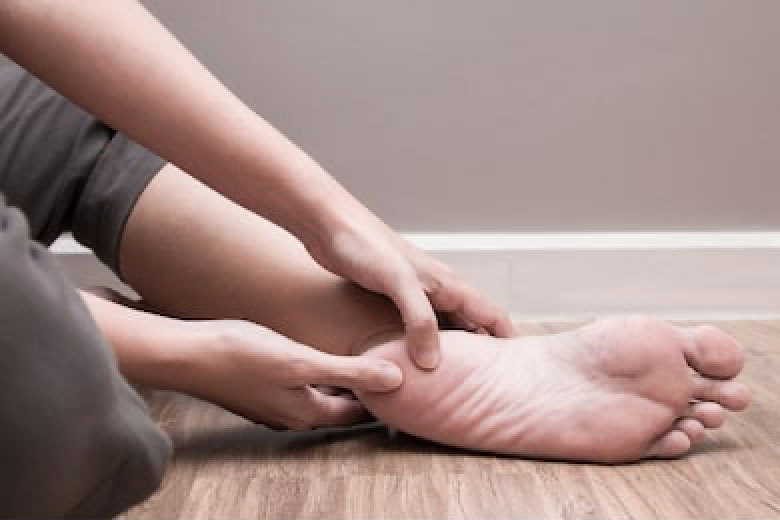
Heel Pain
Each foot absorbs 60 tons of stress with every mile you walk, so it’s no surprise that heel pain is the most common foot problem.
The team at Orthopaedic Foot & Ankle Center (OFAC) in Falls Church and Arlington, Virginia, diagnose and treat all types of heel pain, including plantar fasciitis. If you suffer from heel pain and live in the Washington, DC, area, call or request an appointment online today.
Heel Pain Q & A

-
What causes heel pain? Back to top
Your feet are capable of handling a lot of stress, but too much pressure can irritate sensitive tissues. The providers at Orthopaedic Foot & Ankle Center treat many conditions that cause heel pain, including:
Plantar fasciitis
There are many causes of heel pain, but plantar fasciitis is the most common. Plantar fasciitis causes stabbing pain at the bottom of the heel. Pain is usually worse first thing in the morning or after long periods of rest. The pain may fade as you walk around and stretch the plantar fascia.
Achilles tendonitis
Achilles tendonitis causes pain at the back of the heel where the Achilles tendon attaches to your heel bone. Pain typically develops slowly and worsens over time. You may also notice the skin behind your heel become red, swollen, and thicker.
Bone spurs
A bone spur is a calcium deposit that may form on your heel bone if plantar fasciitis or Achilles tendonitis remain untreated for a long time. Bone spurs vary in size and are visible on an X-ray.
Heel pain is also caused by nerve problems in either the foot or spine.
-
When should I see a doctor for heel pain? Back to top
Heel pain often resolves with self-care methods, including rest, ice, and over-the-counter pain medications like ibuprofen. You should schedule an appointment at Orthopaedic Foot & Ankle Center if you have heel pain that lasts for more than a couple of weeks, even with home treatments.
You should seek immediate medical care if you experience severe heel pain and swelling that follows an injury or if a fever accompanies your heel pain.
-
How is heel pain diagnosed and treated? Back to top
First, your provider at Orthopaedic Foot & Ankle Center reviews your symptoms and medical history. They ask about how long you’ve been experiencing heel pain and whether the pain improves or worsens with certain activities. Then, they carefully examine your foot and heel. They may take an X-ray to check for fractures or a bone spur.
Then, they recommend the best treatment for your particular condition. Depending on the cause and severity of your heel pain, treatment may include:
- Physical therapy
- Custom orthotics
- Night splints
- Cortisone injections
Your provider may also recommend shock wave therapy (EPAT), platelet-rich plasma, amniotic injections, or other forms of “regenerative medicine” treatments to help relieve your heel pain.
If your condition is severe or your heel pain continues despite treatment, the team at Orthopaedic Foot & Ankle Center may recommend surgery. They perform minimally invasive procedures whenever possible.
For accurate diagnosis and effective treatment of heel pain, call Orthopaedic Foot & Ankle Center or request an appointment online today.
-
 Foot & AnkleArlington, Falls Church
Foot & AnkleArlington, Falls Church -
 Foot & AnkleArlington, Falls Church
Foot & AnkleArlington, Falls Church -
 Foot & AnkleArlington, Falls Church
Foot & AnkleArlington, Falls Church -
 Foot & AnkleArlington, Falls Church
Foot & AnkleArlington, Falls Church